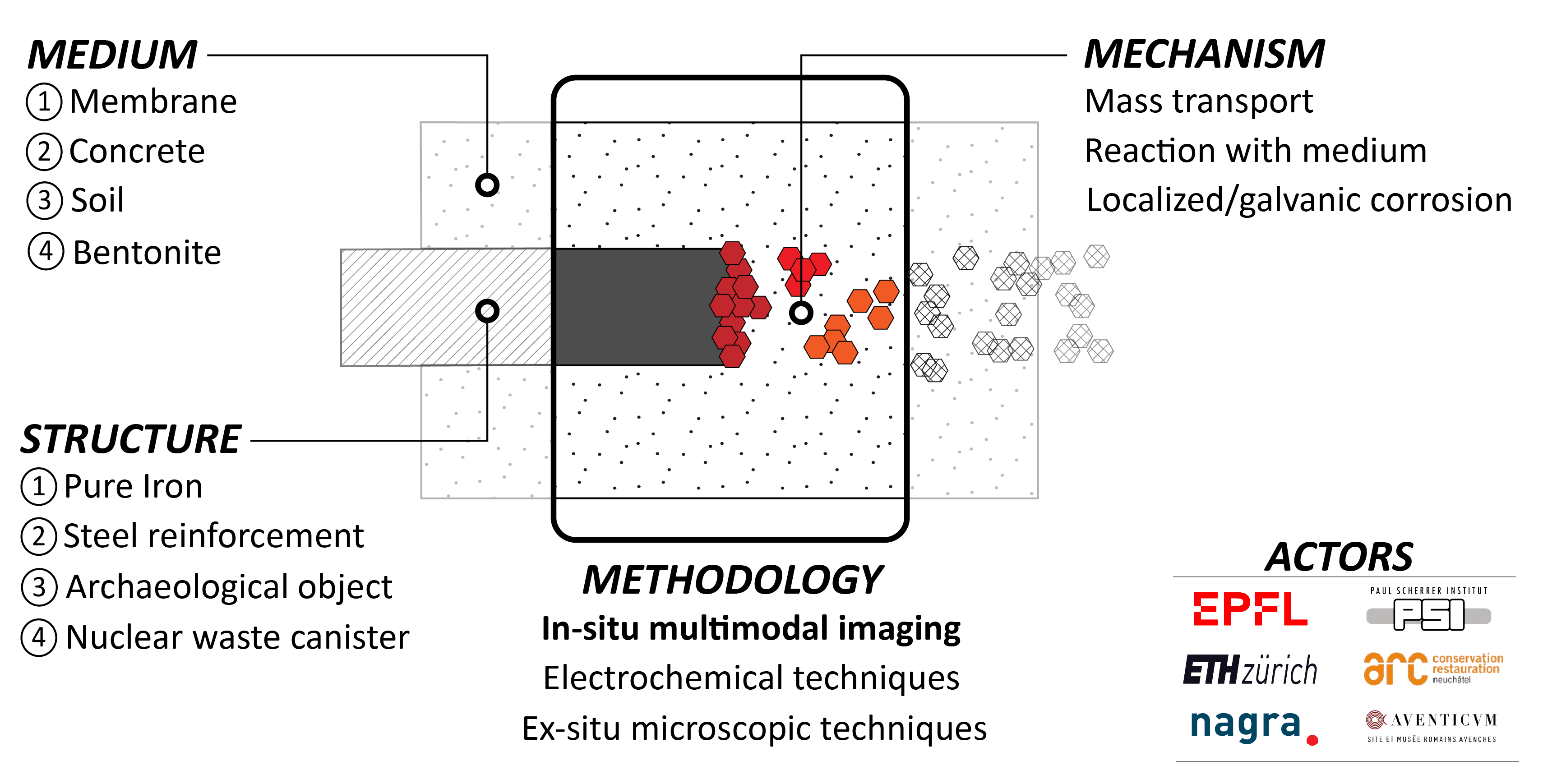Overview
This project aims to make a breakthrough in the fundamental understanding of iron corrosion processes occurring within opaque porous media.

The challenge
The limitations of the use of traditional, destructive analytical techniques for studying corrosion is a common problem limiting the understanding of iron corrosion mechanisms in different fields: archaeology, conservation, civil engineering, and radioactive waste disposal. The main common challenge in these different fields is that the media surrounding the metal (soil, oxide and mineral scales, concrete, or bentonite) are non-transparent and do not allow one to study, in-situ, the internally occurring phenomena, such as the initiation of localized corrosion, the growth of corrosion product layers into the porous medium, the spatial distribution of corrosion attack and precipitated corrosion products, or the transformations occurring in oxide scales in a changing environment. Additionally, these corrosion phenomena share similarities in terms of their transient nature resulting from nonconstant exposure conditions and influences related to complex, heterogeneous conditions at the interface metal/porous media.
The approach
Based on encouraging recent progress made in multimodal imaging, we aim to develop and validate an X-ray and neutron computed tomography method, tailored for the in-situ study of corrosion phenomena in opaque porous media. In combination with well-proven corrosion science methods, this novel approach will allow devising new experiments to provide a common solution to the challenges described above. A particular novelty is that the new approach will allow following time-dependent processes within the porous media and give detailed spatial (3D) information about the distribution of different phases. Systematic experiments will bridge across length scales and across different porous media relevant for the involved disciplines, to address these interrelated corrosion phenomena in an interdisciplinary effort.
